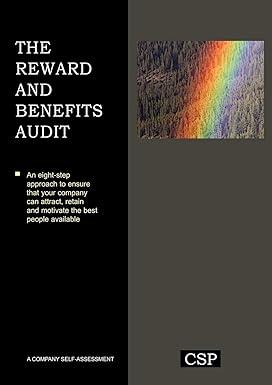Question
4. Introduction to the present value of money Under the concepts of the time value of money, you can determine the current, or present, value
4. Introduction to the present value of money
Under the concepts of the time value of money, you can determine the current, or present, value of a cash receipt or payment that will occur at some specified time in the future, given a specified rate of interest. This technique can be used to calculate the present value of a single or a series of future receipts or payments.
Dakota and Gabriella are walking after class between the library and the best pizzeria near campus. Theyre discussing Dr. Thibodeauxs latest financial management lecture, which addressed the concept of present value and the process for calculating it. In anticipation of tomorrows quiz, theyve decided to review their lecture notes and the textbook materials and then practice one or two problems. Complete the missing information in the conversation that follows.
GABRIELLA: So, what is a present value, and why is it important to be able to calculate it?
DAKOTA: According to Dr. Thibodeaux, an assets present or value is the current value of the cash flows that it will pay or receive in the future.
GABRIELLA: Wait! Can you give me an example of when it would be appropriate to calculate a present value?
DAKOTA: Sure, but it might make more sense for you to identify such a situation. So, tell me in which of the following two scenarios you would use a present value calculation, and then explain why that is so.
| Scenario 1: You would like to know how much you should place on deposit to have accumulated a certain amount of money by a specific future date. | |
| Scenario 2: You would like to know how much a given amount deposited today will grow into by a specific future date. |
GABRIELLA: Ummm. I think is the situation that requires the calculation of a present value.
The reason is that the amount to be placed on deposit is both and occurs .
DAKOTA: Very good! So heres your next question: How is the present value of a single amount calculated?
GABRIELLA: It can be calculated by rearranging the formula that is used in the calculation of a future value. To see this . . .
DAKOTA: Wait, wait, wait. Could you show me what you mean by writing it down?
Here is a sheet of paper, show me how to rearrange the future value formula to solve for a present value.
GABRIELLA: OK, first, lets write down the equation used to calculate a future value (FV).
| The Calculation of a Future Value | ||||
|---|---|---|---|---|
| = | x |
Next, lets rearrange the equation to isolate the present value (PV) term by dividing both sides of the equation by the . Then, well simply rewrite the equation to put the unknown variable, the PV term, on the left-hand side of the equation:
| FVNFVN | = = | PVPV | (1 + I)N(1 + I)N | |
| FVNFVN | 1(1 + I)N1(1 + I)N | = = | PVPV | |
| PVPV | = = | FVNFVN | 1(1 + I)N1(1 + I)N |
So, does this make sense? Weve rearranged the future value equation to solve for the present value.
Also, notice that the present value interest factor is the of the future value interest factor. This means that you dont necessarily need two different interest factor tables for the single cash flow; you can make do using either simply the present value table or the future value tableso long as you use it correctly.
DAKOTA: So, do you think that were ready to do a problem?
GABRIELLA: Sure! Heres one from our homework. You work and Ill work, and well see if our answers match.
DAKOTA: OK. Lets get started.
Homework Problem
Sarah wants to reduce the cost of graduate school by starting a savings plan today. As a sophomore, she has estimated that she has three years to accumulate the $15,000 that she needs to help cover some of her projected expenses. The account she would open would earn 8% per year compounded annually.
So how much would she have to deposit today to accumulate $15,000 in three years? Or, stated differently, what is the value of $15,000? (Note: Round your answer to the nearest whole dollar.)
I think that Sarah would have to deposit so that she would have the desired $15,000 at the end of three years.
Is that what you got when you solved the problem?
GABRIELLA: Yes it is! I think weve got a good start on getting ready for Dr. Thibodeauxs next quiz.
Step by Step Solution
There are 3 Steps involved in it
Step: 1

Get Instant Access to Expert-Tailored Solutions
See step-by-step solutions with expert insights and AI powered tools for academic success
Step: 2

Step: 3

Ace Your Homework with AI
Get the answers you need in no time with our AI-driven, step-by-step assistance
Get Started


